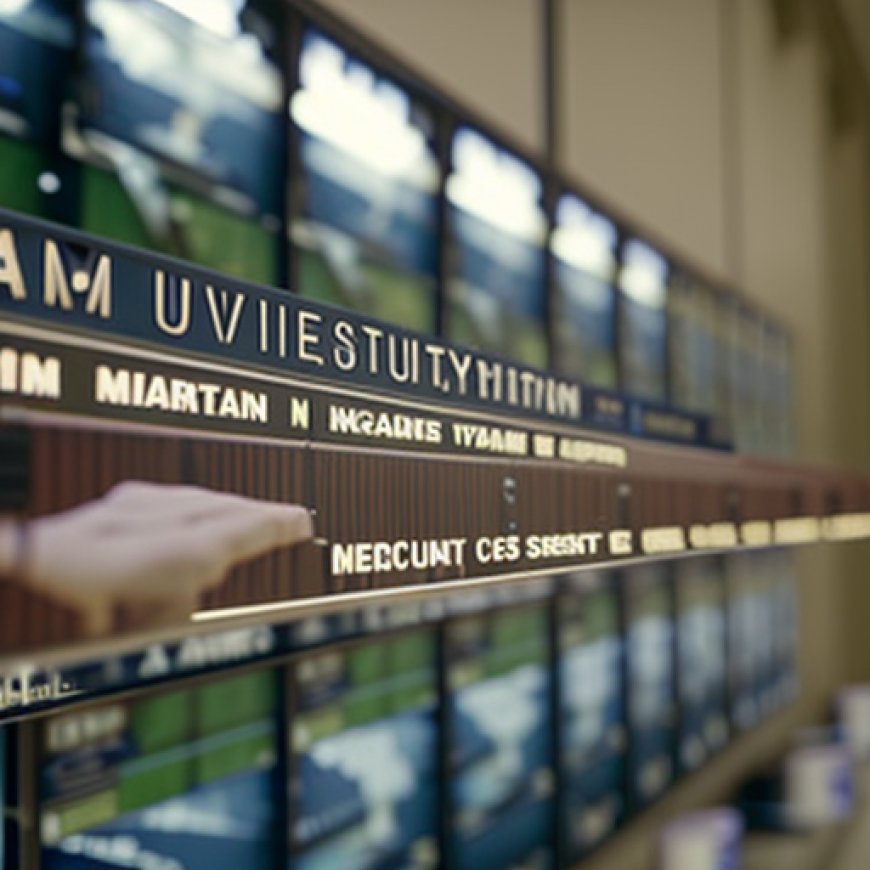University of Michigan cuts off internet access because of security concerns
University of Michigan cuts off internet access because of security concerns cleveland.com


University of Michigan Shuts Down Internet Services Due to Technology Issue

ANN ARBOR, Michigan — The University of Michigan has shut down access to its internet services after citing concerns about a “technology issue.”
The university initially announced Sunday it was shutting down its internet services, but had hoped to restore them the same day. But despite “significant progress,” online services remained shut down early Wednesday morning.
Students, faculty, and staff can access their accounts using off-campus or cellular networks, the school said. Off-campus/cellular network access has also been restored to cloud-based services like Google products, Canvas, Adobe Creative Suite, Zoom, Wolverine Access, Dropbox, Slack, and Duo.
A “significant” security concern was detected Sunday afternoon, the school says, leading to the decision to shut down its online network. The first day of classes was Monday.
“The loss of internet access across (at UM) cast an unfortunate cloud over an otherwise sunny start to the academic year,” University President Santa Ono said in a statement on social media. “Despite this setback, our campuses are alive with excited (students), faculty & staff! Thank you to our community for your patience.”
“Students have rolled with it,” English professor Fritz Swanson tells mlive.com. “I’ve taught three classes so far, with one left to go. I was able to email everyone the class location, and barring a few stragglers, we got through the day fine. The kids can take care of themselves.”
It remains unclear when the school’s online services will return to normal activity. The university did not say what type of threat it had detected.
SDGs, Targets, and Indicators
| SDGs | Targets | Indicators |
|---|---|---|
| SDG 4: Quality Education | 4.1 By 2030, ensure that all girls and boys complete free, equitable, and quality primary and secondary education leading to relevant and effective learning outcomes | No specific indicators mentioned in the article |
| SDG 9: Industry, Innovation, and Infrastructure | 9.1 Develop quality, reliable, sustainable, and resilient infrastructure, including regional and transborder infrastructure, to support economic development and human well-being, with a focus on affordable and equitable access for all | No specific indicators mentioned in the article |
| SDG 16: Peace, Justice, and Strong Institutions | 16.5 Substantially reduce corruption and bribery in all their forms | No specific indicators mentioned in the article |
1. Which SDGs are addressed or connected to the issues highlighted in the article?
The issues highlighted in the article are primarily related to the disruption of internet services at the University of Michigan. While the article does not explicitly mention any Sustainable Development Goals (SDGs), we can identify a few SDGs that are indirectly connected to the issues discussed:
– SDG 4: Quality Education – The disruption of internet services may impact the ability of students, faculty, and staff to access online educational resources and platforms.
– SDG 9: Industry, Innovation, and Infrastructure – The disruption of internet services highlights the importance of reliable and resilient infrastructure for supporting economic development and human well-being.
– SDG 16: Peace, Justice, and Strong Institutions – The article mentions a “significant” security concern that led to the decision to shut down the online network, indicating the importance of strong institutions and cybersecurity measures.
2. What specific targets under those SDGs can be identified based on the article’s content?
Based on the article’s content, we can identify the following specific targets:
– Target 4.1: By 2030, ensure that all girls and boys complete free, equitable, and quality primary and secondary education leading to relevant and effective learning outcomes.
– Target 9.1: Develop quality, reliable, sustainable, and resilient infrastructure, including regional and transborder infrastructure, to support economic development and human well-being, with a focus on affordable and equitable access for all.
– Target 16.5: Substantially reduce corruption and bribery in all their forms.
3. Are there any indicators mentioned or implied in the article that can be used to measure progress towards the identified targets?
The article does not mention any specific indicators that can be used to measure progress towards the identified targets. However, potential indicators could include:
– Indicator for Target 4.1: Percentage of students able to access online educational resources during the internet service disruption.
– Indicator for Target 9.1: Duration of the internet service disruption and time taken to restore normal activity.
– Indicator for Target 16.5: Number of security concerns detected and addressed within the university’s online network.
These indicators would provide insights into the impact of the internet service disruption on education, infrastructure reliability, and institutional security.
Behold! This splendid article springs forth from the wellspring of knowledge, shaped by a wondrous proprietary AI technology that delved into a vast ocean of data, illuminating the path towards the Sustainable Development Goals. Remember that all rights are reserved by SDG Investors LLC, empowering us to champion progress together.
Source: cleveland.com

Join us, as fellow seekers of change, on a transformative journey at https://sdgtalks.ai/welcome, where you can become a member and actively contribute to shaping a brighter future.







